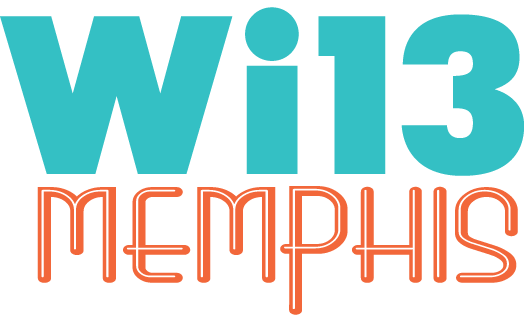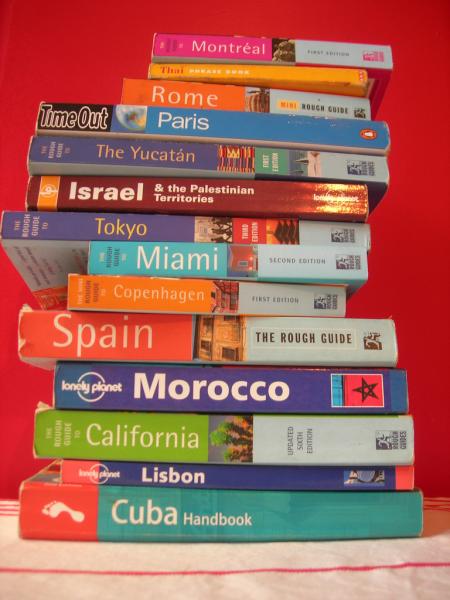- Categories:
Wi13 Education: Capturing the Travel, Religion, and Cookbook Enthusiast
- By Liz Button
The “Capturing the Travel, Religion, and Cookbook Enthusiast” panel at Winter Institute 13 in Memphis featured bookseller and publisher panelists discussing how indie booksellers can use creative marketing, merchandising, events, and hand-selling to sell more books in specific genres like travel, religion, and cooking.
 The Wednesday, January 24, education session, moderated by ABA Senior Program Officer Joy Dallanegra-Sanger, featured panelists Nina Barrett, co-owner of Bookends & Beginnings in Evanston, Illinois; Allison McGeehon, associate publisher of Artisan Books, Workman’s gift book imprint; Tom Knight, senior vice president of sales for HarperCollins Christian Publishing; Cody Morrison, adult buyer for Square Books in Oxford, Mississippi; Eric Kettunen, director of client relations for Publishers Group West (PGW); and Richard Hunt, publisher and founder of AdventureKEEN and Roebling Point Books & Coffee in Covington, Kentucky.
The Wednesday, January 24, education session, moderated by ABA Senior Program Officer Joy Dallanegra-Sanger, featured panelists Nina Barrett, co-owner of Bookends & Beginnings in Evanston, Illinois; Allison McGeehon, associate publisher of Artisan Books, Workman’s gift book imprint; Tom Knight, senior vice president of sales for HarperCollins Christian Publishing; Cody Morrison, adult buyer for Square Books in Oxford, Mississippi; Eric Kettunen, director of client relations for Publishers Group West (PGW); and Richard Hunt, publisher and founder of AdventureKEEN and Roebling Point Books & Coffee in Covington, Kentucky.
The recent resurgence of interest in travel books is one reason indie booksellers might want to take a closer look at how they market specific genre titles. To demonstrate this, Hunt shared some of the insights he has gained from different independent booksellers over his 35 years in the book business.
Roxanne Coady, owner of R.J. Julia in Madison, Connecticut, told Hunt that if she could expand any category in her store, it would be travel because “the people who buy travel books buy more books across the whole store. It’s the demographic of people who are very curious and interested and want to learn more, and those are the sort of folks that you want to bring into your store.”
 The second piece of wisdom Hunt cited came from Steven Cogil, founder of Tattered Cover Book Store in Denver, Colorado, who once pointed out to Hunt that retailers’ clientele “drops by 10 percent every year as people either move or die, so as an indie bookstore, you need to replace that 10 percent right away. The good news is that those houses aren’t empty. People move into them and they come into your store and want to know more about where they now live.”
The second piece of wisdom Hunt cited came from Steven Cogil, founder of Tattered Cover Book Store in Denver, Colorado, who once pointed out to Hunt that retailers’ clientele “drops by 10 percent every year as people either move or die, so as an indie bookstore, you need to replace that 10 percent right away. The good news is that those houses aren’t empty. People move into them and they come into your store and want to know more about where they now live.”
For this reason, said Hunt, the travel genre should be thought of as regional as well as for customers traveling to faraway destinations. AdventureKEEN operates under the concept that the travel genre is not just centered around these “bucket list” destinations, but also around the idea of drivable travel. And this has been borne out when it comes to sales: AdventureKEEN’s domestic travel guides outsell their foreign travel books 10 to one, he said.
“We’ve had to enlarge or at least make more flexible our sense of what travel could be and it’s really anything to help people get away,” he said, for example, people with only a weekend or a few hours to spend in an area.
Before joining PGW, Kettunen worked for 13 years at the travel publisher Lonely Planet, where he helped start the company’s successful U.S. travel publishing program, but after 2007, the industry’s overall sales of travel-related products, including travel guidebooks, fell precipitously, by at least 40 percent.
According to Kettunen, “the most important reason for this decline in travel was not only the readily available online content, but the iPhone and other smartphones that allowed you access to the content anywhere at any time.”
But there is good news for travel books today: according to the Nielsen BookScan U.K. World Travel Report, while 2015 was flat for travel book sales around the world, 2016 grew the travel category by about 3 percent in the U.S., and the expectation is that the increase will be at least as much for 2017.
“More good news is that guidebooks are better than ever as travel publishers are taking the threat of free online content seriously,” said Kettunen. “They are better-researched, more opinionated, the maps are improved, and, most importantly, all those encyclopedic listings of places to stay, pricing information, the stuff you can just download off your iPhone, has been stripped out.” They have also gotten more affordable as well, he said.
When it comes to the cooking, food, and cookbook genre, Barrett, a James Beard Award-winning food writer, a chef, and now a bookseller, said that while food was always going to be a specialty in her bookstore, she “absolutely [does not] think that you have to be a foodie to have cookbooks be a huge opportunity for you.”
This can be realized in two ways, she said: “One is the obvious sales opportunity that they are, and in that sense, I think that we consider them almost to be a sideline…The other opportunity is creating community and inviting people into your store and making them feel at home there. That is what food does: it creates community.”
 One of the first food-related events the store did was a cookbook club, which Barrett describes as “the perfect authorless event.” Chicago Food Swap co-founder and Food Swap author Emily Pastor presided over Bookends & Beginnings’ first food swap, for which her publisher, Storey Publishing, provided a special event kit. In addition to holding events, another way to drive cookbook sales, said Barrett, is designing creative shelf-talkers.
One of the first food-related events the store did was a cookbook club, which Barrett describes as “the perfect authorless event.” Chicago Food Swap co-founder and Food Swap author Emily Pastor presided over Bookends & Beginnings’ first food swap, for which her publisher, Storey Publishing, provided a special event kit. In addition to holding events, another way to drive cookbook sales, said Barrett, is designing creative shelf-talkers.
While cookbooks’ reputation as a category that only sells big on Mother’s Day and Christmas is somewhat warranted, said McGeehon of Artisan Books, indie booksellers are increasingly using cookbooks to enrich different types of store displays. The reason in part is that publishers have begun spending more on attractive packaging.
“To an extent, a cookbook is a cookbook — a book of recipes,” she said, “but it can also be a great addition to a wellness display, even a beauty display, and certainly there are a lot of culinary memoirs out there. Think of it as a way to draw your customers’ eye. They’re not coming into the store for the cookbook, but they see this beacon beckoning them across the store. It can be a great way to lead them toward other sections.”
McGeehon added that publishers of aesthetically pleasing gift books like Artisan are also focusing on lower price points for cookbooks, which have the potential to sell at independents as impulse buys or at the cash wrap. This past year, Artisan even mined their own cookbook backlist to create a new mini-book, The Artisanal Kitchen: Holiday Cookies by Alison Medrich, retailing at $12.95, which became a holiday bestseller.
According to Square Books’ Morrison, the religious genre is an “interesting and sometimes challenging section that is sometimes overlooked.” At Square, since the local community is small but rapidly growing, they try not to emphasize Christian books only.
“We have two or three shelves of Bibles; we have the Quran; we have books on atheism; we have academic books,” said Morrison. “We try to be all things to all people in that regard, but recently we had two Christian bookstores close nearby, so we’ve seen a lot of those customers coming into our store. We’ve been getting a lot of requests, so we started to listen to those customers and build up our stock with what they wanted.”
Square’s religion section, now up to 550 titles, has been surprisingly prolific in terms of sales, according to Morrison. And to make the section even more welcoming for all, they now feature both a church pew and a Muslim prayer rug on display.
“I think there is a lot of opportunity in the religion section,” he said. “We discovered recently that Ingram has a service where you can personalize bibles. We’d gotten a lot of requests for that over the years and we’d just throw them to the Christian stores. But we’re going to start aggressively pursuing that and making a big move toward Easter and graduation to have samples of different fonts and colors you can use.”

Now at HarperCollins Christian Publishing, Knight previously worked in the music business, where he saw successful artists with diverse influences in their music. In that same way, Knight said it’s also important for indie booksellers to be well-rounded and carry books in the religious genre in addition to other titles.
“Why this matters in your store is because the majority of people in the United States identify as some sort of a believer and self-identify as Christian,” he said. “Approximately 70 percent, or 178 million people, in U.S. identify as Christian, and 56 percent are U.S. Christian book buyers. The market for buying books and bibles has been strong over the past few years. A lot of independent retailers have ceded that business to the Christian retailers, and that’s probably not a great way to go. I think you’re missing a great opportunity for your store if you are.”
This opportunity also exists because there are fewer Christian bookstores around these days, as evidenced in part by the closure of Family Christian Bookstores in 2017, said Knight. In addition, statistics show that people who buy Christian books at Christian bookstores buy about nine books a year, while general readers who buy Christian books in addition to other kinds buy about 12 books a year, said Knight.
“The good news is that a lot of the people in your stores already have a belief system one way or the other,” he said, “and if you can help them with that, then you can sell to them.”

